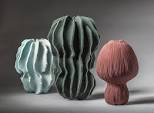What is formalism?
Formalism describes the critical position that the most important aspect of a work of art is its form – the way it is made and its purely visual aspects – rather than its narrative content or its relationship to the visible world.
Lines
Lines in photography are extremely important. A good arrangement of lines are able to lead the viewers eyes to certain areas of the image. However a poorly arrangement of lines could guide the viewers eyes away from the main subject of the photo.


As you can see this image has lines due to the train tracks which causes your eyes to be led towards the middle of the photo. This also adds depth.
Depth
Depth in photography in simpler terms means how much of your image is in focus. In more complicated terms it is the distance in a photo where the subject appears.


The depth in these photos gives the photos dimension. It also causes your eyes to be drawn to the object that is in focus for example the leaf and the daisies.
Shape
Shape photography is the two-dimensional appearance of objects as your camera captures them. For instance, if you look at an image of a ball, you’ll find its shape as a circle. Likewise, if you look at a picture of a cube-shaped suitcase, you’ll find its shape like a square.
In a photograph, a silhouette is the purest essence of a shape, they have no form, texture, or colour. Due to its stark contrast with its surroundings, a silhouette is also the most visually obvious.

The photo above is an example of a silhouette.
Form
There are two types of form:
Geometric form in photography focuses on the geometric lines, shapes, and patterns that exist in the world. While geometric images are often found in architectural photography, the subject matter can be anything from vast cityscapes to patterns in nature.


Organic photography includes shapes which are full of curves and may not be geometrically perfect. They’re natural and non-uniform. We find organic shapes in nature. For example, you’ll find them in the curve of a tree branch or the shape of a flower petal.


Texture
Texture in “real life” can be, basically, smooth or rough. We can use other descriptors as well such as slimy, wet, hard, soft, bumpy, shiny, etc. Texture in photography is similar to form in that it is revealed by variations in tonality and presented in two dimensions.
In photography things such as patterns can give texture to an image, for example scales. The physical print of a photo also has its own texture such as glossy and matte.

Colour
Color in photography composition is one of the main tools a photographer can use to create mood in their images. How you combine various colours or exclude them from your photographs influences how people might feel when they look at them. This is why understanding colour in photography is so important.
Warm colours:
In photography, the dominant colours are the warm colours, such as red, yellow, and orange. These colours are considered dominant because they reach our eyes before the cooler colours.



Cool colours:
The cooler colours are the receding colours, e.g. blue, green and purple.



Size
Size in photography describes the physical magnitude, extent, or bulk of the contents in the photo. Size in a photograph is relative and can be an illusion. When a familiar object appears in the frame of a photograph for example a car, basketball, streetlamp. We immediately get a feel for the scope of the entire scene. Without a familiar object in the image, we struggle to determine the scale shown in the photograph.




Ruby, a good blog post that demonstrates your understanding of Formalism. To improve your blogpost and achieve more marks respond to each formal element with your own images and add to blog post for further analysis/ comparison.
Overall, you have have be more productive and publish more blog posts frequently. See Go4School tracking sheet for more details of individual work missing – you will receive and email tomorrow Monday 9 Oct